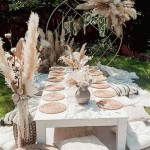How To Decorate With Sage Green Walls
Sage green has emerged as a popular color choice for interior walls, prized for its calming and versatile nature. It offers a tranquil alternative to stark white or bolder hues, creating a soothing atmosphere that complements a wide range of design styles. Successfully incorporating sage green into a living space involves careful consideration of complementary colors, textures, and lighting to achieve a cohesive and aesthetically pleasing result.
The appeal of sage green lies in its subtle earthiness. As a muted, grayish-green tone, it evokes feelings of nature and serenity. This quality makes it particularly well-suited for bedrooms, living rooms, and even bathrooms, where a relaxed ambiance is desired. However, its versatility extends beyond these spaces, proving equally effective in kitchens and dining areas when paired with the right elements.
The selection of a specific sage green paint shade is crucial. Variations exist, ranging from cooler, more blue-toned greens to warmer, more yellow-toned greens. The ideal choice depends on the room's natural lighting and the desired overall aesthetic. Rooms with ample natural light can often handle cooler sage greens without appearing cold, while rooms with less natural light may benefit from warmer shades to maintain a sense of brightness and comfort.
Choosing Complementary Colors
Selecting the right colors to pair with sage green walls is paramount to creating a harmonious and balanced space. The inherent neutrality of sage allows it to work well with a diverse palette, but some combinations are particularly successful. The choice of complementary colors significantly impacts the overall mood and style of the room.
One classic and foolproof combination is sage green with natural wood tones. The warmth of wood, whether in furniture, flooring, or decorative accents, provides a beautiful contrast to the coolness of the green. This pairing creates a natural and inviting atmosphere, perfect for spaces where relaxation is key. Consider using light to medium wood tones like oak, maple, or beech to enhance the lightness and airiness of the room. Deeper wood tones, such as walnut or mahogany, can add a touch of sophistication and drama, but should be used sparingly to avoid overwhelming the space.
Another effective pairing is sage green with creams and whites. This combination creates a soft and serene ambiance, ideal for bedrooms and living rooms. Off-whites and creams soften the green and create a sense of spaciousness. Introducing textures such as linen, wool, or cotton in these neutral tones further enhances the overall comfort and visual appeal. The use of various shades of cream and white can also add depth and dimension to the space, preventing it from feeling flat or monotonous.
For a bolder and more contemporary look, consider pairing sage green with accents of terracotta or rust. These warm, earthy tones create a striking contrast and add a touch of personality to the space. This combination works particularly well in kitchens and dining areas, where a sense of energy and warmth is desired. Terracotta pottery, rust-colored throw pillows, or artwork featuring these hues can effectively complement the sage green walls. However, it's important to use these accent colors judiciously to avoid overwhelming the space. Balance is key to achieving a harmonious and visually appealing result.
Metallic accents, such as gold, brass, or copper, can also work beautifully with sage green walls. These metals add a touch of glamour and sophistication, elevating the overall aesthetic of the room. Consider incorporating these accents in lighting fixtures, hardware, or decorative objects. The warm tones of gold, brass, and copper complement the coolness of the green, creating a balanced and visually appealing contrast. Silver and chrome can also be used, but should be employed carefully to avoid creating a cool and sterile feeling.
Finally, incorporating pops of color, such as blush pink, mustard yellow, or deep blue, can add visual interest and prevent the space from feeling too monotonous. These accent colors should be used sparingly, perhaps in throw pillows, artwork, or small decorative accessories. The key is to choose colors that complement the sage green and enhance the overall aesthetic of the room. Avoid using too many different colors, as this can create a cluttered and overwhelming effect.
Incorporating Texture and Pattern
Texture and pattern play a significant role in enhancing the visual interest and depth of a space decorated with sage green walls. By strategically incorporating different textures and patterns, the room can be transformed from a simple backdrop to a visually engaging and comfortable environment.
Texture can be introduced through various elements, including furniture, fabrics, and decorative accessories. Consider incorporating furniture pieces with natural textures, such as wood with visible grain, woven rattan, or upholstered items in linen or velvet. These materials add visual depth and tactile appeal to the space. The contrast between smooth and rough textures can create a dynamic and engaging environment, preventing the room from feeling flat or sterile.
Rugs are another excellent way to introduce texture into a room. A plush shag rug, a natural fiber rug like jute or sisal, or a patterned rug can add warmth and visual interest. Choose a rug that complements the color palette of the room and enhances the overall style. A textured rug can also help to define different areas within the space, creating a sense of organization and flow.
Fabrics play a crucial role in adding texture and pattern to a room. Consider using a variety of fabrics with different textures and patterns in curtains, throw pillows, and upholstery. Linen, velvet, cotton, and wool all offer unique textures that can enhance the visual appeal of the space. Patterns, such as stripes, florals, or geometric designs, can add visual interest and personality. However, it's important to use patterns judiciously and ensure that they complement the overall style of the room.
Wall decor is another opportunity to introduce texture and pattern. Consider hanging artwork with textured canvases or framed prints with intricate patterns. Woven wall hangings, macrame art, or textured wallpaper can also add visual interest and depth to the space. The key is to choose wall decor that complements the color palette and style of the room, creating a cohesive and visually appealing environment.
Plants are a natural and effective way to introduce texture and pattern. The varying shapes, sizes, and textures of plants can add visual interest and freshness to the space. Consider incorporating a variety of plants with different leaf shapes and textures, such as ferns, succulents, and trailing vines. Plants also help to purify the air and create a more relaxing and inviting atmosphere.
Optimizing Lighting
Lighting is a critical element in any interior design scheme, and it plays an especially crucial role in spaces with sage green walls. The way light interacts with the color can significantly impact the overall mood and aesthetic of the room. Understanding the principles of both natural and artificial lighting is essential for creating a well-lit and visually appealing space.
Natural light is the most desirable source of illumination, and maximizing its presence is crucial. Keep windows clean and unobstructed to allow as much natural light as possible to enter the room. Consider using sheer curtains or blinds to filter the light and prevent glare. Strategically placed mirrors can also help to reflect natural light and brighten the space, especially in rooms with limited natural light.
Artificial lighting should be layered to provide both ambient and task lighting. Ambient lighting provides overall illumination, while task lighting is focused on specific areas for activities such as reading or cooking. A combination of overhead lighting, table lamps, and floor lamps can create a well-lit and versatile space. Consider using dimmers to adjust the brightness of the lights and create different moods.
The color temperature of light bulbs can also impact the overall aesthetic of the room. Warm-toned light bulbs create a cozy and inviting atmosphere, while cool-toned light bulbs create a brighter and more energizing environment. For sage green walls, warm-toned light bulbs are often preferred, as they complement the coolness of the green and create a more balanced and inviting space. However, the choice of color temperature ultimately depends on personal preference and the desired mood of the room.
Lighting fixtures can also serve as decorative elements, adding texture and visual interest to the space. Consider incorporating lighting fixtures with unique designs or finishes, such as pendant lights with woven shades, table lamps with ceramic bases, or floor lamps with metal accents. The style of the lighting fixtures should complement the overall style of the room and enhance the aesthetic appeal.
Pay attention to the placement of lighting fixtures to ensure that the room is evenly illuminated. Avoid placing lighting fixtures directly above seating areas, as this can create harsh shadows. Instead, opt for indirect lighting, such as wall sconces or recessed lighting, to provide a more diffused and flattering light.
By carefully considering the interplay of natural and artificial light, as well as the color temperature and placement of lighting fixtures, it is possible to create a well-lit and visually appealing space with sage green walls. Effective lighting can enhance the beauty of the color and create a welcoming and comfortable environment.

Sage Green Decorating Ideas Contemporary Living Room Design Accent Walls In Paint Colors For

18 Sage Green Living Room Ideas For A Subtle Fresh Look Coco Lapine Designcoco Design

What To Know About Decorating With Sage Green

18 Sage Green Living Room Ideas For A Subtle Fresh Look Coco Lapine Designcoco Design

Deep Sage Living Room Green Colors

18 Sage Green Living Room Ideas For A Subtle Fresh Look Coco Lapine Designcoco Design

46 Soothing Sage Green Home Decor Ideas Digsdigs

How To Decorate With Sage Lifeyet

18 Sage Green Living Room Ideas For A Subtle Fresh Look Coco Lapine Designcoco Design

What To Know About Decorating With Sage Green
Related Posts







